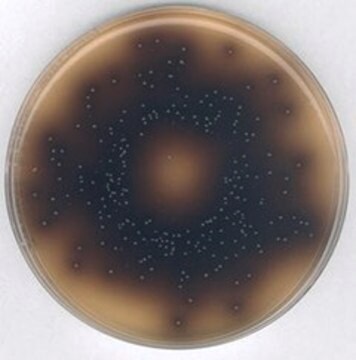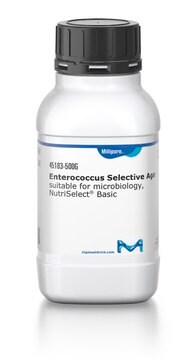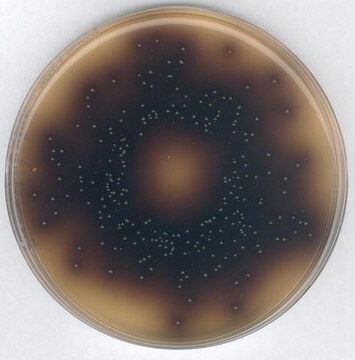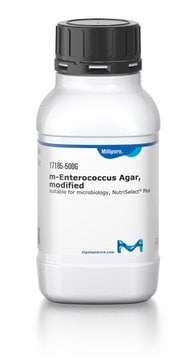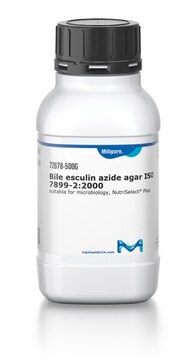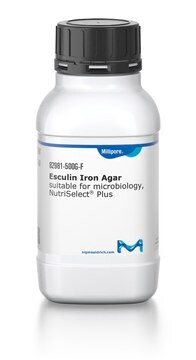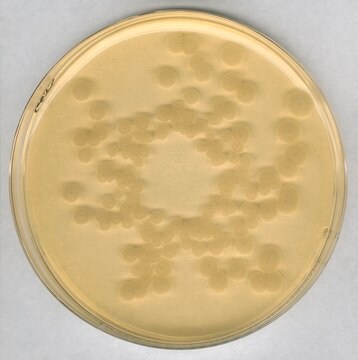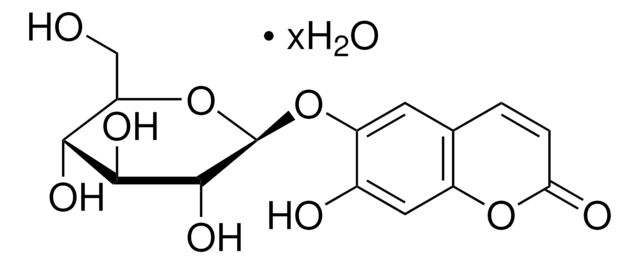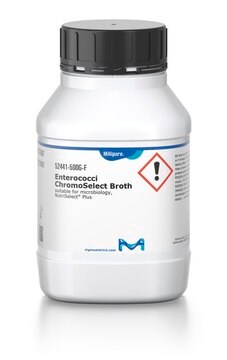48300
Bile esculin agar
suitable for microbiology, NutriSelect® Plus
Synonyme(s) :
Esculin Bile Agar
About This Item
Produits recommandés
Agence
according to ISO 10273:2017
Niveau de qualité
Stérilité
non-sterile
Gamme de produits
BioChemika
Forme
powder
Durée de conservation
limited shelf life, expiry date on the label
Composition
agar, 15.0 g/L
esculin, 1 g/L
ferric citrate, 0.5 g/L
meat extract, 3 g/L
meat peptone, 5 g/L
ox-bile, 40 g/L
Fabricant/nom de marque
NutriSelect® Plus
Technique(s)
microbe id | specific enzyme detection: suitable
pH final
6.6±0.2 (25 °C)
Application(s)
environmental
food and beverages
water monitoring
microbiology
Adéquation
Streptococcus spp.
selective and differential for Enterococcus spp.
Application
Notes préparatoires
Note de bas de page
The designations basic, plus, or prime are added to indicate the quality control level, from basic quality control to standard QC plus to prime for full regulatory compliance.
Informations légales
Code de la classe de stockage
11 - Combustible Solids
Classe de danger pour l'eau (WGK)
WGK 3
Point d'éclair (°F)
Not applicable
Point d'éclair (°C)
Not applicable
Faites votre choix parmi les versions les plus récentes :
Déjà en possession de ce produit ?
Retrouvez la documentation relative aux produits que vous avez récemment achetés dans la Bibliothèque de documents.
Les clients ont également consulté
Notre équipe de scientifiques dispose d'une expérience dans tous les secteurs de la recherche, notamment en sciences de la vie, science des matériaux, synthèse chimique, chromatographie, analyse et dans de nombreux autres domaines..
Contacter notre Service technique